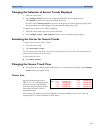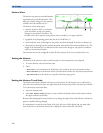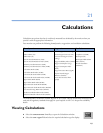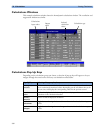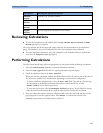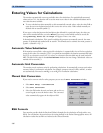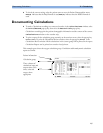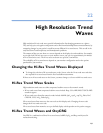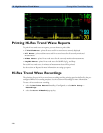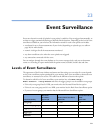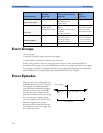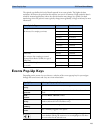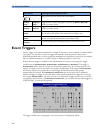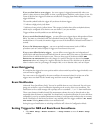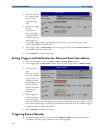
239
22
22High Resolution Trend
Waves
High resolution (hi-res) trend waves provide information for fast-changing parameters at a glance.
They can help you to recognize trend patterns and to find interrelationships between measurements, by
comparing changes in your patient’s condition across different hi-res trend waves. This can aid in the
early detection of cardiorespiratory and hemodynamic problems.
The amount of data you can show on a screen depends on the display size and resolution: for example,
on an eight inch (20 cm) wave trace on your monitor screen, you can view approximately six minutes
of hi-res trend wave trace. The hi-res waves are drawn at a speed of 3 cm/minute.
The availability of hi-res trend waves depends on your monitor configuration and on the options
purchased for your monitor.
Changing the Hi-Res Trend Waves Displayed
♦ To change the selection of hi-res trend waves on the Screen, select the hi-res trend wave and select
the required hi-res trend wave from the list of available measurements.
If there are no hi-res trend waves on the Screen, you must change to a Screen with hi-res trend waves.
Hi-Res Trend Wave Scales
High-resolution trend waves are either compressed realtime waves or fast numeric trends.
• Hi-res trend waves from compressed realtime waves include: Resp, CO
2
, A B P, P A P, C V P, I C P, AW P,
anesthetic agents.
• Hi-res trend waves from fast numeric trends include: btbHR, SpO
2
, tcpO
2
, tcpCO
2
, Pulse, Perf,
CPP, BIS, CCO, inO
2
, Delta SpO
2
.
Hi-res trend waves from waves use the wave scale as their display scale. Changing the wave scale
changes the hi-res trend wave scale.
Hi-res trend waves from numerics use a pre-defined display scale dependent on the patient category.
Hi-Res Trend Waves and OxyCRG
OxyCRG is a combination of three hi-res trend waves, btbHR, SpO
2
, and Resp, mainly used in
neonatal monitoring.



